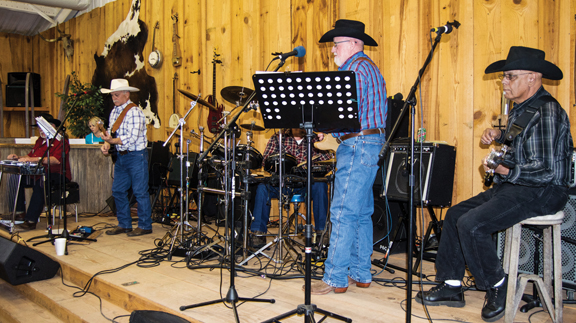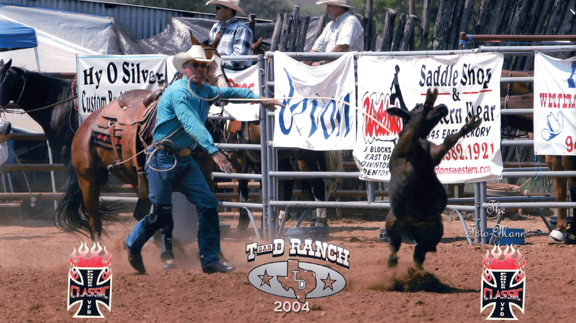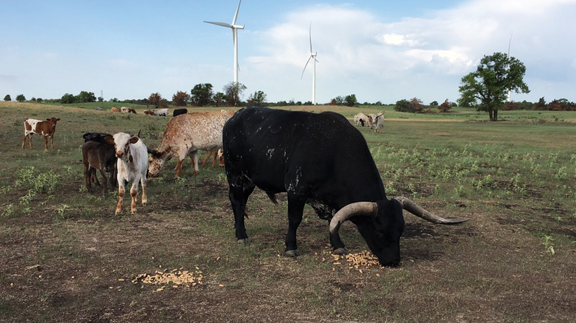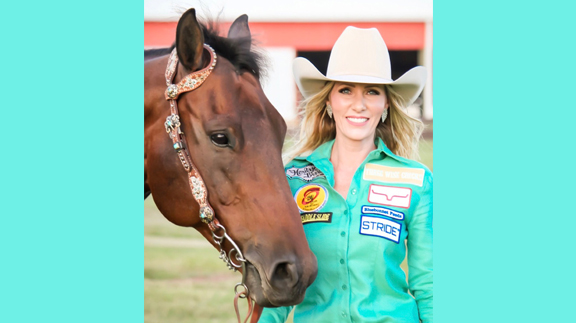Country Lifestyle
Life of a Ranch Wife
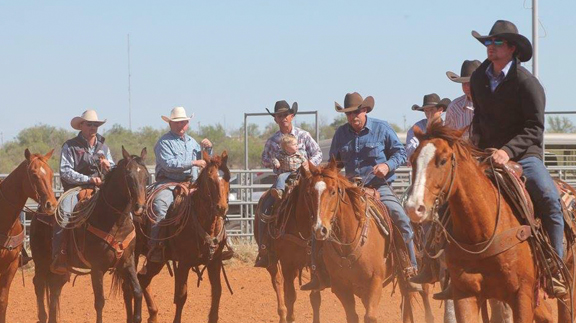
By Lanna Mills
Recently we traveled across the state line into Texas for a ranch rodeo that my husband Gary and some of his cowboy buddies were participating in. This particular event was a benefit ranch rodeo along with an open ranch bronc riding, an auction and a dance. The proceeds were given to the families of the young people who tragically lost their lives in the wildfires that swept through the Texas Panhandle while trying to save their cattle.
It was said that more than $15,000 was raised at this event alone. It is wonderful to see cowboys and ranchers come together to help each other in a time of crisis, knowing that it could have very well been themselves who were struck by this horrific disaster.
Ranch rodeos are unlike ordinary rodeos. The events are based off of the duties of cowboys on real working ranches. They promote ranching heritage and western lifestyle. Ranch rodeos are probably the only time you will see someone pay to do what they do all day for a living. It gives them the opportunity to compete against others and showcase their skills. If they are lucky they may even collect some prize money and belt buckles.
Each ranch rodeo is different and offers an assortment of events including sorting, doctoring, branding, trailer loading, stray gathering, wild cow milking or ranch bronc riding. Rules will vary rodeo to rodeo. Events may vary on time limits, loop limits on certain events and some may allow cowboys to tie their ropes on while others will not.
Before the rodeo begins, there will be a “grand entry.” This is where the teams will ride into the arena and will be introduced by the announcer. Someone will ride in carrying the American Flag. The teams will line up and the cowboys will remove their hats. At every rodeo, someone will sing the national anthem and another will say a prayer. It makes one feel patriotic to see the red, white and blue flag representing our great nation blow in the breeze.
Sorting
Sorting is an event where the cattle are held in a certain area of the arena marked with a line. The cattle are numbered and the team will be drawn a designated number.
One cowboy will sort out the team’s designated number, and push them across the line. The other cowboys will hold the line and try to turn back any unwanted cattle from crossing. If any unwanted cattle cross the line the team will be given a “no time.”
The objective is to get your cattle across the line in the least amount of time. There is usually a time limit on this event of about two minutes, and if the team exceeds the time limit it will result in a “no time.” On the ranch, cowboys may be required to sort calves off the cows when time to wean or sort cattle to be sold or moved to another pasture.
Doctoring
Similar to sorting, doctoring is where one calf is sorted from the herd. When the calf crosses the line, the cowboys head and heel and mark it with chalk or paint stick. This event is also based on fastest time and will usually have a time limit and possibly a rope limit-meaning that the cowboys may only throw their ropes a certain number of times. If the cowboys exceed the time or rope limit, the team will be given a “no time.”
On the ranch at times it is necessary for the cowboys to rope a sick wheat pasture calf or a cow with hoof rot and give him or her a shot.
Branding
Branding consists of calves placed in a designated area of the arena. Sometimes there will be cows with the calves. One member of the team will be horseback, while two will flank and one will brand. Members of other teams will hold the line and not allow the calves to scatter. The man horseback will ride into the herd, rope and drag a calf out.
Once the calf is received by the flankers, he will ride back in to catch his next calf. Rules usually state that the man horseback is not allowed to lope in the herd. Some events insist on only legal catch being two back feet while others will allow you to catch the calf by the neck or a single back foot.
Branding is a regular occurrence on the ranch. Branding allows ranchers to keep track of their cattle and deter potential thieves as well as administer proper vaccinations and cut any bull calves. Long ago, when cattle from many ranches grazed together, the cattle were branded so at roundup, ranchers knew which cattle belonged to which.
Trailer Loading
Trailer loading is made up of an empty trailer placed in the arena. A yearling is turned out and the team must rope it and drag it into the trailer.
Once the yearling is shut in the front of the trailer and the rope has been removed, the cowboys must load one of their horses in the back and shut and latch the trailer gate. After cowboys must hurry to the hood of the pickup or get in the truck, which so ever the rules read. This event is also based on the fastest time and may have a time or loop limit.
Like other events, cowboys use this technique on the ranch. Sometimes cattle cannot be penned or one may get on the neighbor’s and cowboys must rope it in the pasture and transport it to the appropriate location whether it be a set of pens, to the sale barn or turned back out to pasture.
Stray Gathering
Stray gathering is where the team is on one end of the arena. Two head of cattle are turned out, and the cowboys must rope and tie down both head. Once again the fastest time is the objective, and there is most often a limit on loops thrown and time.
Stray gathering and trailer loading go hand in hand on the ranch. Cattle must be roped and tied town until someone can bring the truck and trailer to load them.
Wild Cow Milking
Wild cow milking is probably the most exciting event and is a real thrill to watch. One cow is turned out and one cowboy is to rope her. The other team members are a-foot and run to her once she is roped and begin to try to milk her. Usually one cowboy will get her by the head and one by the tail and try to hold her still while the other collects the milk in a bottle. One team member then runs the milk to the judge where he makes sure the milk was, in fact, collected.
Like other events, wild cow milking usually has a time limit and a loop limit and fastest time wins. This event can get chaotic, as the momma cows doesn’t take to kindly to being roped and milked.
It is unlikely that you will see this exact thing happening on the ranch. However, sometimes a cow’s teats will be too large for a newborn calf to suck, and she will have to be milked so that the calf can latch on.
Ranch Bronc Riding
Ranch bronc riding is similar to saddle bronc riding but the cowboy uses his everyday ranch saddle. The chute opens and the cowboy must stay on for eight seconds, and will receive a “no time” if he is bucked off before. Some ranch rodeos allow the cowboy to use a night latch, allowing the cowboy to hold on with his free hand.
The cowboy is given a score based on how well he rides. This event represents working ranch cowboys breaking colts. When in the pasture a horse may start bucking and the cowboy must try his hardest to stay on. If he is bucked off he may have a long walk back to the house or pickup.
Watching the cowboys compete in a ranch rodeo is extremely entertaining and you will gain a great respect for just how hard these cowboys work.
Country Lifestyle
Western Housewives – April 2024
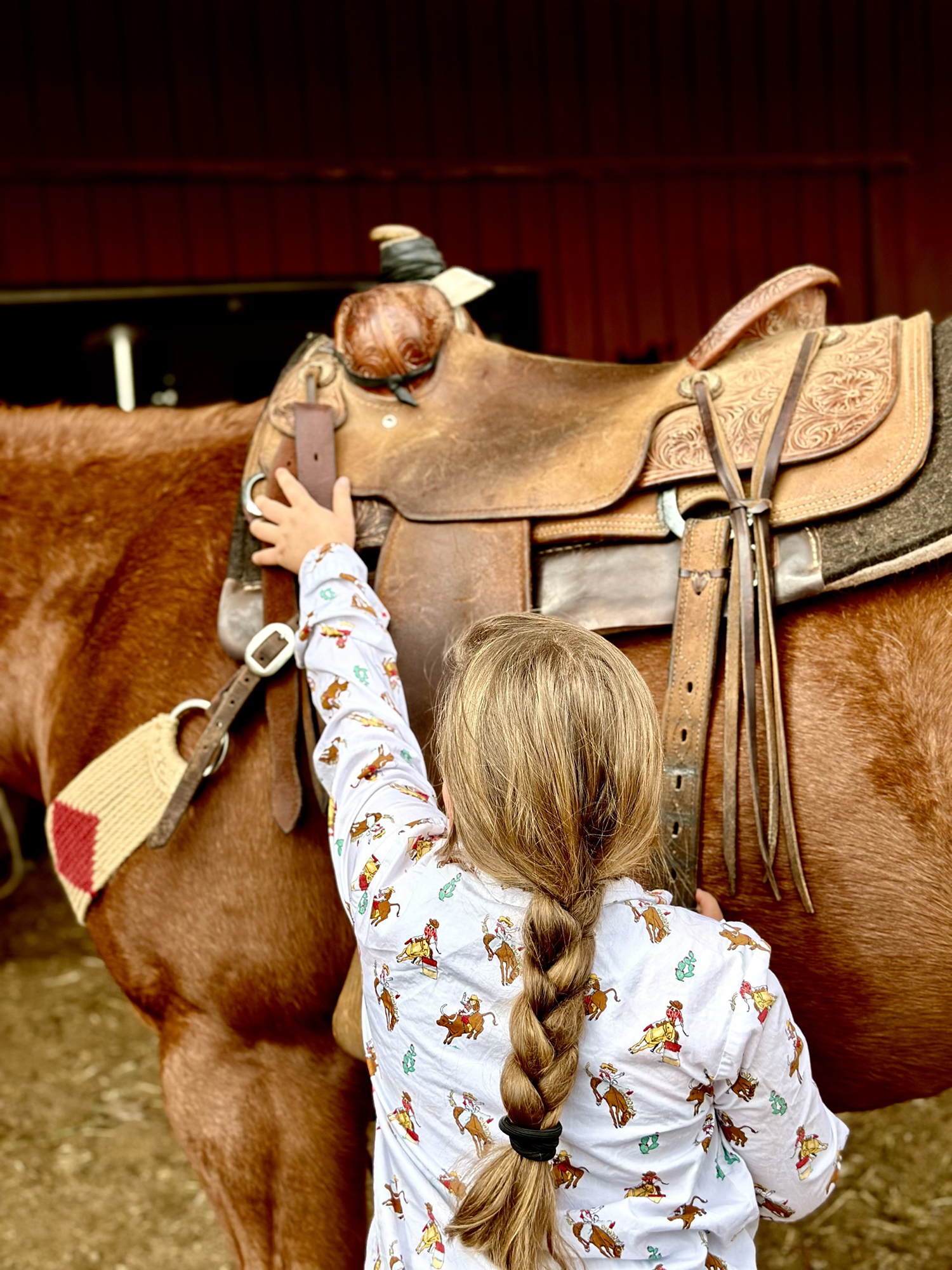
I am a mother. I do not know about the rest of you mothers, but the second I became “Mom,” my life became a constant state of wondering if I am doing a good job.
That is especially hard to tell when you choose to homeschool. I have no feedback from anyone that is not family. No teacher conferences telling me the little girl talks too much or the oldest boy can not sit still. Sure, I could ask my husband how he thinks our kids are maturing emotionally and intellectually. Still, he would most likely look out the window and see the aforementioned children running around in the sand with only socks on. He would then look at me and ask me to make him a quesadilla. I would say yes, we would joke about socks, and life would go on. See? Zero feedback to go on here.
So, you start to rely on personal experiences. You come up with little tests throughout your days to rate your kids “ready for society” level.
Example 1: A trip to the big city where the kids treat the grocery store as their personal snack depot. They successfully eat all the grapes and a whole block of cheese in your basket before you can check out. As you leave, they tell the door greeter, “Have a nice day.”
Example 2: Your husband enters an indoor rodeo. You are bouncing the baby and notice your oldest child is eating a bag of dippin dots. First, you smile and then remember that she has no money. Come to think of it, the concession stand is not even open. You have now concluded your firstborn has broken into the closed concession stand with her posse of four-year-old convicts and has helped herself to some ice cream.
Example 3: You are in church. The children have managed to be nice and quiet the entire time. After the message and the closing “Amen” is said, your three-year-old turns to you and says, “Well, that wasn’t so bad.”
After a little while, you start to question your “Ready for Society” tests. Are they productive? Are they accurate? I figure the answer to that question is better left unanswered.
One evening this summer, after I had quit conducting all these tests, I was mourning the loss of my children’s place in society when I looked up and noticed all our horses running down our driveway, headed for the neighboring pastures. For a minute, I just sat there wondering what I should do. I was holding the baby and wearing the ever-practical slip-on loafer and had absolutely no idea what was for supper. That had nothing to do with the horses being out, but that is part of being a housewife, I guess. You always wonder if you left the iron on and what is for supper.
While I sat there stunned, pondering life’s biggest questions, my husband and my daughter yelled at me to get a move on as they were already springing into action. My husband ran to stop them, and my daughter was on her way to the barn for some halters. Meanwhile, I was tripping over my loafers, scaring the horses and making already stressful matters much worse.
My husband finally got the horses cornered at the far end of our neighbor’s pasture and waved at me for some assistance. I handed the baby to my daughter and told her to watch the boys and stay in the house while I headed to help.
Within 30 minutes, we caught the horses and led them back to the corrals. I was in a near state of panic, wondering how long the boys had been crying and what state of mind my daughter was in, having just witnessed her dad nearly sweat to death and her mother make terrible fashion choices.
To my surprise, as I walked up to the house, I saw three happy children on the porch eating a supper of plums and peaches. The boys laughed at their sister as she shuffled little cars and cows around for them to play with. Not only had she fed and entertained her brothers, but she had also cleaned the house and fed the chickens to boot. I just stood there quietly watching for a while, not wanting to disturb the moment.
After the kids passed their first ever Ready for Society test, I realized that society’s standards versus my own were probably quite different. Society tells me that my kids need to be clean and quiet. Seen but not heard. Able to recite the ABCs on command but have no opinion on political matters. To be kind to everyone but never bring up God’s name and what He has to do with it. Society says my kids should fall into the assembly line and attend a good college someday to get a good minimum-wage job.
Why would I want my kids to fit into society when I do not even fit into society? No, I think I will keep my dirty little misfits all to myself. I think I will continue raising them to know how to care for themselves and each other. I will continue to show them how to serve God and work hard. I will continue to raise them never to wear slip-on shoes in the pasture and that plums and peaches are a totally acceptable supper on a warm summer evening.
Country Lifestyle
Poinsettia Partnerships Will Make Your Holidays Beautiful

By
Norman Winter
Horticulturist, Author and Speaker
National Poinsettia Day just passed, December 12 to be exact. While I am sure the powers to be wanted a celebratory type day, from what I have been seeing this year is this may have been a deadline day. This most likely applies to poinsettia partners too! If you are asking what a poinsettia partner is then put on your thinking cap and gather around.
Proven Winners got most of us to thinking partners when they introduced the concept of combining poinsettias with Diamond Frost euphorbias. This is one of the best ideas ever and we now actually have three choices, Diamond Frost, Diamond Snow with double flowers and Diamond Mountain that is the taller of the three.
To a horticulturist like myself this combination is so special because both the Poinsettia and the Diamond Frost are Euphorbias. That’s right, they are cousins. Just like Christmas, families visiting and long-lost cousins getting together. Of course, the main reason we like this idea is that the red, pink, or variegated poinsettia looks incredible, it’s as though it is sitting on a bed of snow or frost. I have found these to be more available at fine florists.
But if you are going to create your own and go plant shopping then keep in mind some other options you might want to-try. For instance, a couple of years ago Jenny Simpson of Creekside Nursery in Dallas North Carolina introduced us to not only using caladiums at Christmas but even in combinations with poinsettias. She used the Heart to Heart White Snowdrift caladiums which turned out to be a perfect partner with red poinsettias.
My time as Executive Director at the Coastal Georgia Botanical Gardens in Savannah GA taught me there are opportunities for outside use with poinsettias, particularly if you are astute at long range weather forecasting. First consider that Savannah is technically zone 8B with a proclivity to lean into zone 9. We used poinsettias in large planters surrounded by Silver Bullet Dusty Miller or artemisia.
A similar application gave me the opportunity of photographing pink poinsettias mass planted in an atrium-like setting and surrounded by gray leaved Icicles helichrysum. But the most obvious and perhaps easiest if you are getting a late start is to combine your poinsettias with another Christmas plant like cyclamen. White cyclamen around a red poinsettia can be simply breathtaking.
This year I have also been watching what I call the professional garden club ladies walking out of both florists and floral departments with holly berries. We all think of hollies on swags above the fireplace or front door, but two or three preserved branches loaded with red berries stuck in a pot of white poinsettias is quick, easy and unbeatable.
Red berries for Christmas, landscape beauty, and of course feeding the birds is a prime reason to grow winterberry hollies like the compact Berry Poppins. Consider also growing Berry Heavy Gold winterberry holly. Cutting branches of the gold berries to be used with red poinsettias makes a stunning partnership. Go to Proven Winners site, Winterberry Holly: The Ultimate Guide to Getting Colorful Berries. If you don’t have poinsettias yet make today your shopping day! Follow me on Facebook @NormanWinterTheGardenGuy for more photos and garden inspiration.
Country Lifestyle
Homesteading Skills: The Essentials for Self-Sufficiency and Sustainable Living
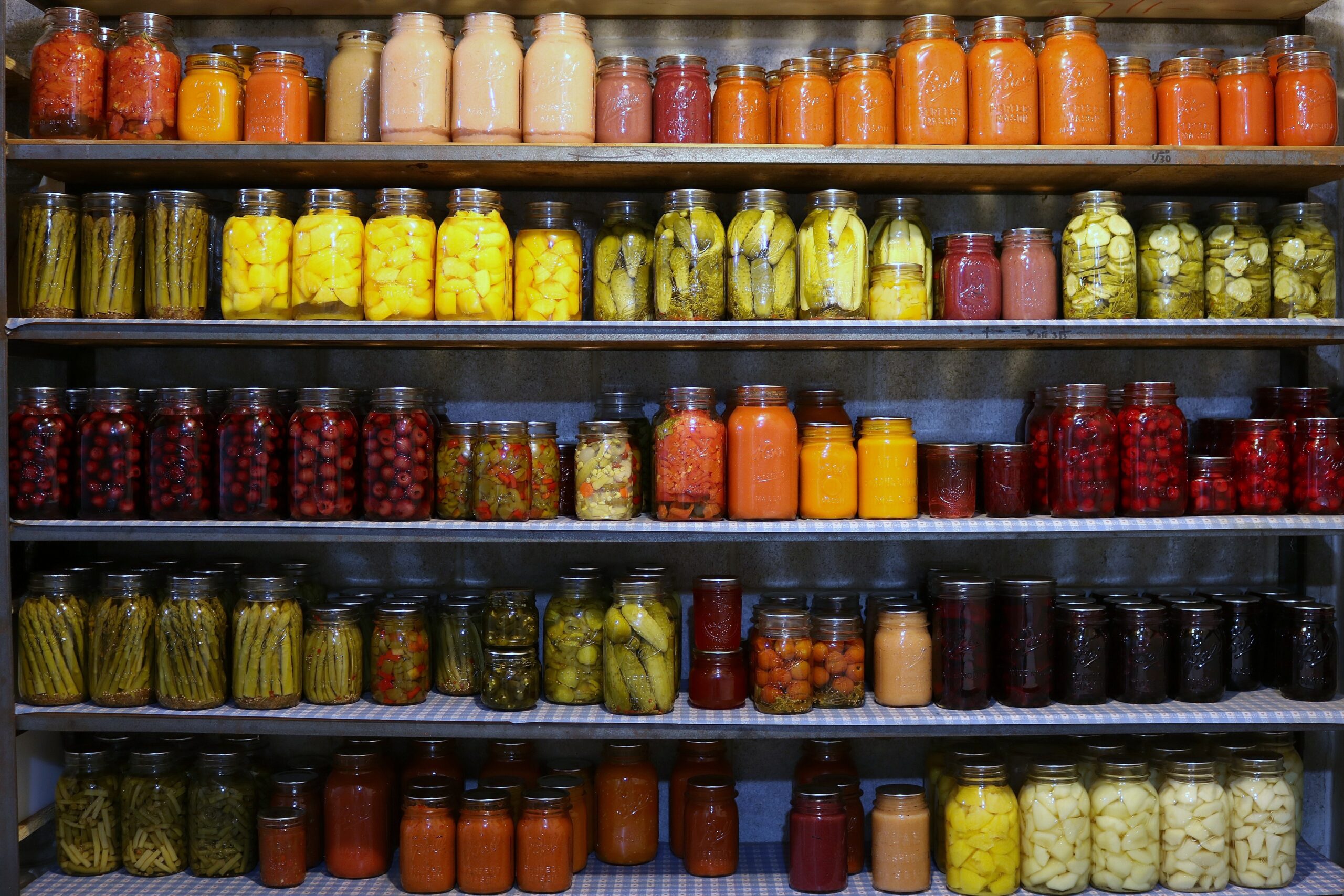
Homesteading, once a way of life for our ancestors, is experiencing a resurgence in today’s world. As people seek greater self-sufficiency, a deeper connection with the land, and more sustainable lifestyles, homesteading skills have become not only practical but also deeply rewarding. In this article, we’ll explore the essential homesteading skills that can empower individuals and families to live more self-reliant and sustainable lives.
1. Gardening
At the heart of homesteading is the ability to grow your own food. Gardening is the foundation of self-sufficiency, and it’s a skill that can be cultivated no matter the size of your property. Key gardening skills include:
Soil preparation and composting
Seed starting and transplanting
Crop rotation and companion planting
Pest and weed management
Harvesting and food preservation techniques like canning, freezing, and drying
2. Animal Husbandry
Raising animals for food, fiber, and companionship is a fundamental aspect of homesteading. The skills related to animal husbandry include:
Care and feeding of livestock, such as chickens, goats, cows, or pigs
Breeding and reproduction management
Livestock housing and pasture management
Animal health and basic veterinary care
Dairy and meat processing if you’re raising animals for consumption
3. Food Preservation
To make the most of your garden’s bounty or the harvest from your livestock, knowing how to preserve food is essential. Food preservation skills include:
Canning fruits and vegetables
Fermentation for foods like sauerkraut and kimchi
Dehydrating fruits, vegetables, and herbs
Making homemade jams, jellies, and pickles
Smoking, curing, and other methods for meat preservation
4. Foraging and Wildcrafting
Homesteading often involves making the most of what nature provides. Learning to identify and use wild edibles and medicinals is a valuable skill:
Identifying edible wild plants and mushrooms
Harvesting herbs for teas, tinctures, and salves
Sustainable foraging practices to protect local ecosystems
Preserving wildcrafted items for later use
5. Beekeeping
Keeping bees not only provides a source of honey but also contributes to pollination on your property. Beekeeping skills include:
Setting up and maintaining beehives
Handling and managing bees safely
Harvesting and processing honey and beeswax
Identifying and addressing common bee health issues
6. Food Self-Sufficiency
Beyond gardening, you can work toward greater food self-sufficiency by learning skills like:
Seed saving to preserve heirloom and open-pollinated varieties
Raising and harvesting small livestock like rabbits or quail
Cultivating perennial food crops like fruit trees and berry bushes
Aquaponics or hydroponics for year-round food production
7. Basic Carpentry and DIY Skills
Homesteaders often find themselves needing to build and repair structures, tools, and equipment. Carpentry and DIY skills include:
Building raised beds, chicken coops, and animal shelters
Basic woodworking for constructing furniture and farm implements
Repairing and maintaining machinery like tractors and generators
Fencing and infrastructure construction for property management
8. Water Management
Managing water resources efficiently is crucial for sustainable living. Key skills include:
Rainwater harvesting and storage
Drip irrigation and water-saving techniques for gardening
Proper well maintenance and water testing
Building and maintaining ponds or water features for livestock and wildlife
9. Energy Independence
To live off the grid or reduce your environmental footprint, consider energy independence skills:
Solar panel installation and maintenance
Wind turbine installation and maintenance
Energy-efficient building design and retrofits
Off-grid living strategies for reduced reliance on public utilities
10. Soap and Candle Making
Homemade soaps and candles can reduce reliance on store-bought products. These skills include:
Making soap using cold or hot process methods
Crafting candles from beeswax, soy, or other materials
Adding scents and colors naturally
11. Herbal Medicine and Remedies
Homesteaders often turn to herbal medicine and remedies for self-sufficiency in healthcare:
Growing and harvesting medicinal herbs
Making tinctures, salves, and herbal teas
Natural remedies for common ailments
Basic first-aid and emergency care skills
12. Sewing and Textile Arts
Basic sewing skills are essential for making and repairing clothing, linens, and more. These skills include:
Hand and machine sewing techniques
Mending and darning clothing
Knitting, crocheting, and other textile arts
Crafting items like blankets, rugs, and quilts
Homesteading is not just a return to simpler times but a way to embrace self-sufficiency, sustainability, and a deeper connection with the land. While mastering all these skills may take time, the journey itself is a rich and rewarding experience. Homesteading is about learning, adapting, and continually improving your ability to live more independently and in harmony with the environment. Whether you have acres of land or a small urban plot, these essential homesteading skills can empower you to live a more self-reliant and sustainable life, fostering a sense of fulfillment and purpose in the process.
-

 Country Lifestyle7 years ago
Country Lifestyle7 years agoJuly 2017 Profile: J.W. Hart
-

 Outdoors6 years ago
Outdoors6 years agoGrazing Oklahoma: Honey Locust
-

 Country Lifestyle2 years ago
Country Lifestyle2 years agoThe Two Sides of Colten Jesse
-

 Attractions7 years ago
Attractions7 years ago48 Hours in Atoka Remembered
-

 Farm & Ranch5 years ago
Farm & Ranch5 years agoHackberry (Celtis spp.)
-

 Outdoors4 years ago
Outdoors4 years agoPecan Production Information: Online Resources for Growers
-

 Equine7 years ago
Equine7 years agoUmbilical Hernia
-

 Country Lifestyle1 year ago
Country Lifestyle1 year agoSay Yes!

